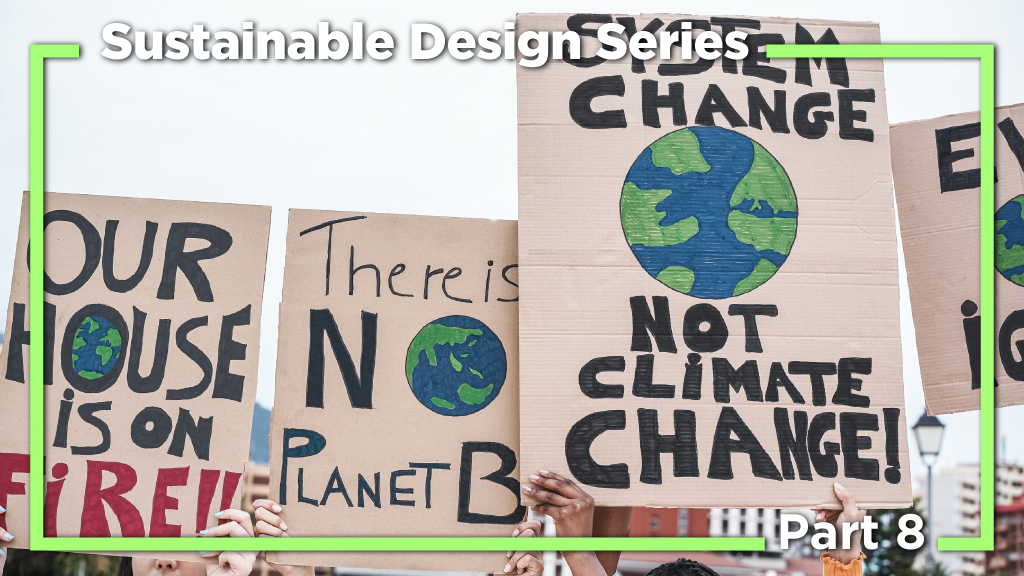For the first time in history, we are witnessing first-hand in real-time how human activity is damaging the environment on a planetary scale. Each of our small individual decisions combined are directly causing this damage.
HVAC directly and massively impacts both the planet’s environment and our individual health.
Our requirement for heating and cooling is the single largest consumer of energy and emitter of carbon (now at its highest levels in the atmosphere in 800,000 years) accelerating the ravages of climate change with numerous and extreme heat waves, cold snaps, droughts, floods, hurricanes, increased sea levels, receding ice levels, lower agricultural yields, dwindling marine life, etc.
We spend 90 per cent of our time indoors, where air can be two to 100 times more polluted than outdoor air. More than 90 per cent of people worldwide breathe air that doesn’t meet the World Health Organization’s minimum health standards.
Air pollution is the fourth biggest risk factor for mortality globally and can be quantified economically: Aggregate worldwide cost of premature deaths due to air pollution is greater than $5tn (2013), about 6 per cent of global GDP. In fact, the European Union estimates that every extra microgram/m2 of particulate (PM2.5) pollution reduces GDP 0.8 per cent.
We expect clean water when we open the tap, so why accept unhealthy air where we live and work? It is because air pollution — indoor and outdoors — is not assigned any direct commercial value. Yet we all experience the direct and indirect impact of pollution, including a degraded quality of life.
Governments are avoiding the issue fearing a backlash from the real estate industry (developers and tenants alike) complaining of higher upfront costs, but ignoring crippling long-term costs, and hurting jobs. Many sustainable technologies actually decrease construction and operating costs, but the impression in the marketplace is that sustainable means more expensive.
However, like solar panels, which started off as super-expensive novelties but now are very cost-effective, sustainable products/services will come down in cost as market acceptance grows.
It is all well and good to expect individuals to shoulder the burden of improving the environment by their procurement decisions, but the harsh truth is it is government’s role to coalesce that individual effort with policies that drive real environmental change.
The most logical means of exposing the true cost of carbon pollution is to assign carbon a cost. This will be a true carrot-and-stick approach. Reward good behaviour and punish bad ones. Pricing carbon will expose the true economic cost of our decisions.
To take one example from the EU: At $120/tonne of carbon, the average retail price of a mid-sized European car will increase about $140/car (to account for the increase in steel prices). This is insignificant. On a national scale, Sweden gives us a good example. It imposed a carbon tax in 1991 (currently priced at about $125/tonne). Over the past 30 years, per-capita carbon emissions have steadily declined, while the economy continued to grow and the environment — and people’s lives — improved.
Governments need to manage the economic, social and environmental wellbeing of its citizens and their land, a tricky balancing act. In terms of sustainability, their responsibility is clear: they must, in this order, ensure we reduce energy consumption; that renewable energy becomes the de-facto standard of power generation and transportation; and that we minimize the use of fossil fuels.
Left to our own devices, with the skewed over-valuation of near-term profit and the massive undervaluation of the importance of the environment, we will each pursue self-interest with little regard to the damage to the environment.
The government is supposed to act as the collective brake on the pure pursuit of profit at the expense of the environment, by assigning a real value to the cost of pollution, be it air, water or land pollution.
In the 1890s/1900s, the issue of the day for large cities was horse-manure. Cities were expanding at a fast pace and horses were an integral part of transportation and commerce.
So much so that each New Yorker’s individual requirement combined to require ~100,000 horses producing 2.5m pounds of manure per day (not to mention urine and flies).
In London, 1894 brought the Great Horse Manure Crisis, with the fear that in 50 years, London would be carpeted by nine feet of manure. However, scarcely 10 years later, the advent of the motor car resolved the horse problem. It’s true that employment in the horse industry plummeted, but employment in replacement industries skyrocketed, with many skills transferable from horse carriages to cars.
And it is true that employment in coal, oil and gas-related industries will drop, but many of these are dangerous and difficult jobs and their loss will not be lamented, and replacement in clean energy and future business will more than compensate.
For example, in Canada the mining/oil and gas sectors employ ~236,000 people, approximately 1.1 per cent of the ~18 million in the labour force. Not all of these jobs will disappear, but some will and transition to other jobs, for the good of society.
Technology and need can resolve our problems. We have the opportunity to address the issue of carbon with sustainable green technologies, but should be careful not to replace carbon with possibly another long-term problem (e.g. nuclear power and long-term radioactive pollution from disposal of spent fissile material).
Consider how public policy, law, public pressure, technology and corporate capabilities were able to resolve transnational issues such as acid rain, caused by toxic sulfur and nitrogen industrial emissions, leaded gasoline and aerosols.
Some naysayers, beneficiaries from the status quo, threatened gloom and doom, but these efforts were successful. Acid rain is way down, lead in gasoline is phased out and the ozone layer is projected to return to 1980 levels by 2075.
Governments have a heavy responsibility. They issue currency, set laws, build roads, regulate health, maintain internal security, have standing armies, all to protect the nation and its citizens. Let’s consider pollution as an enemy and mobilize the necessary resources. With current technologies, we can tackle the carbon issue head-on and win.
This op-ed is the eighth in a series from Eco-Structures International’s founder and director Ghassan Nimry, which focuses on innovative sustainable engineering solutions to today’s climate change problems. He believes that technology can solve many of today’s seemingly intractable problems, but to make it work we need collective work, personal acknowledgement of our role in the problem and our ability to be part of the solution.
Send comments to editor@dailycommercialnews.com.
Read the past parts of this series below:
Part 1 — The commercial imperative for sustainable design
Part 2 — Can buildings become ‘paragons of efficiency?’
Part 3 — You get what you pay for
Part 4 — We’ve always done design this way
Part 5 — ‘Everything is designed. Few things are designed well’: Brian Reed
Part 6 — If you think it’s expensive to hire a professional, wait until you hire an amateur
Part 7 — Regulators/government, whose interests are being served?











Recent Comments
comments for this post are closed